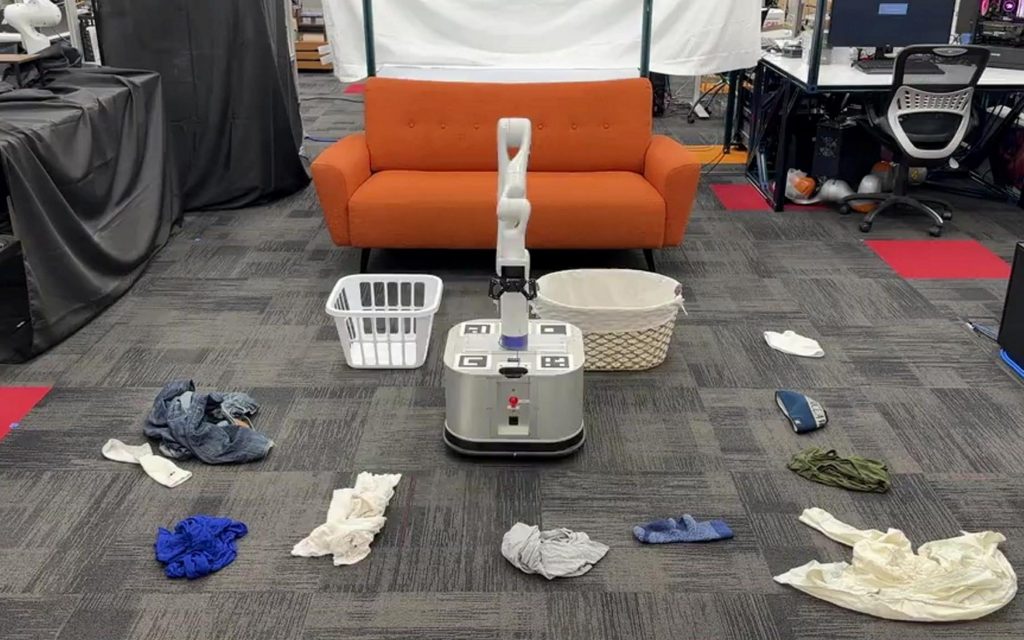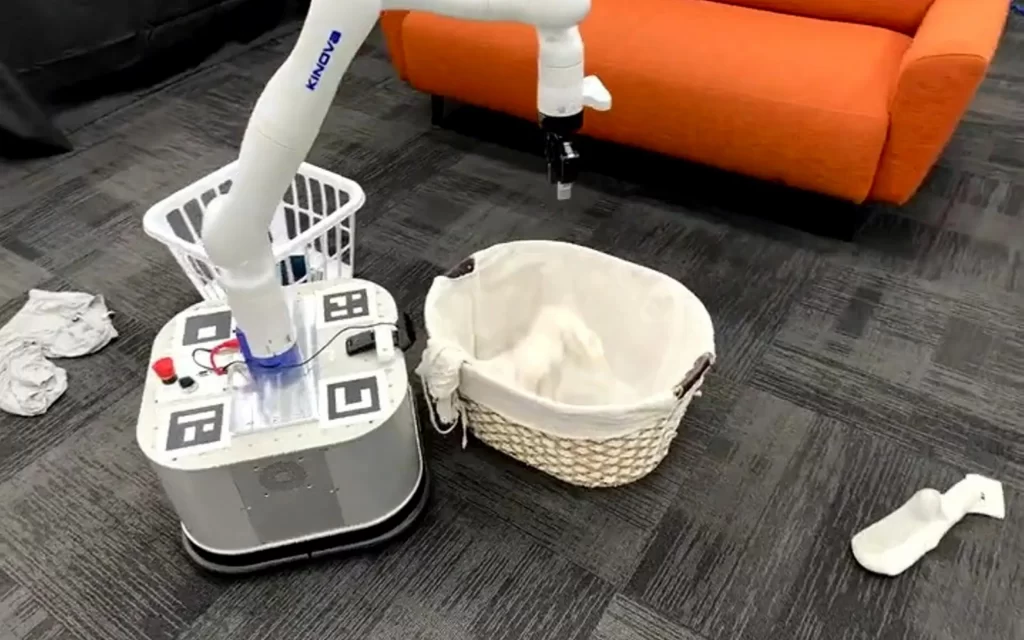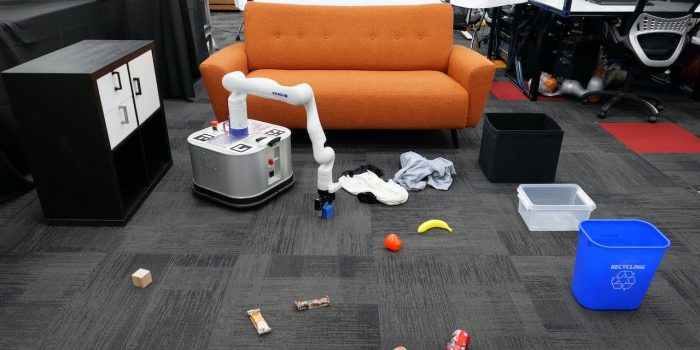Robotics may have found a technological resolution to the age-old stand-off between frustrated parents and messy teenagers. A machine dubbed the TidyBot has been created by Princeton University, which can put away laundry, sort toys into their correct boxes, and even put rubbish in the bin.
Engineers at Princeton found that the TidyBot was able to tidy up various messes with an impressive 85 percent success rate in a real-life scenario resembling an adolescent’s chaotic bedroom. To cater to individual preferences, the team incorporated AI technology into the machine, allowing users to program it to place certain belongings in specific locations. Equipped with two cameras, a multi-jointed robot arm, and a powered square base for mobility, the TidyBot is a versatile solution for household organization.
The researchers created eight real-world situations where 70 different objects were scattered on the floor. The TidyBot was tasked with sorting and placing these objects into one of 11 receptacles. Users input their specific instructions into a large language model (LLM), leveraging the power of GPT-3, the predecessor to ChatGPT. The machine achieved an 85 percent success rate, slightly lower than the 91 percent success rate observed in a simpler lab-based experiment.

According to Jimmy Wu, a PhD student at Princeton and the lead author of the study, organizing a home is a subjective matter. Wu states, “One of the key challenges in robotic household cleanup is deciding where each item goes. People’s preferences can vary greatly depending on personal taste or cultural background.” Language models like ChatGPT provide an effective way to address this issue.
The TidyBot can learn user preferences by taking a few examples of desired object placements, such as cans in the recycling, a black shirt in the darks laundry pile, or a toy in a drawer. Based on this small list, it can infer where similar encountered items should be placed.
The scientists involved in the project, including experts from Google, Princeton, and Stanford, believe that their approach offers a promising direction for developing personalized robotic systems. They state that language models can be directly used off-the-shelf, leveraging the powerful summarization capabilities they have acquired from vast amounts of text data to achieve generalization in robotics.

The TidyBot represents a significant advancement in household automation, offering a potential solution to the perennial struggle of maintaining an organized living space. With further development and integration into daily life, robots like the TidyBot could become valuable assistants, alleviating the burden of household chores and bringing harmony to domestic environments.


